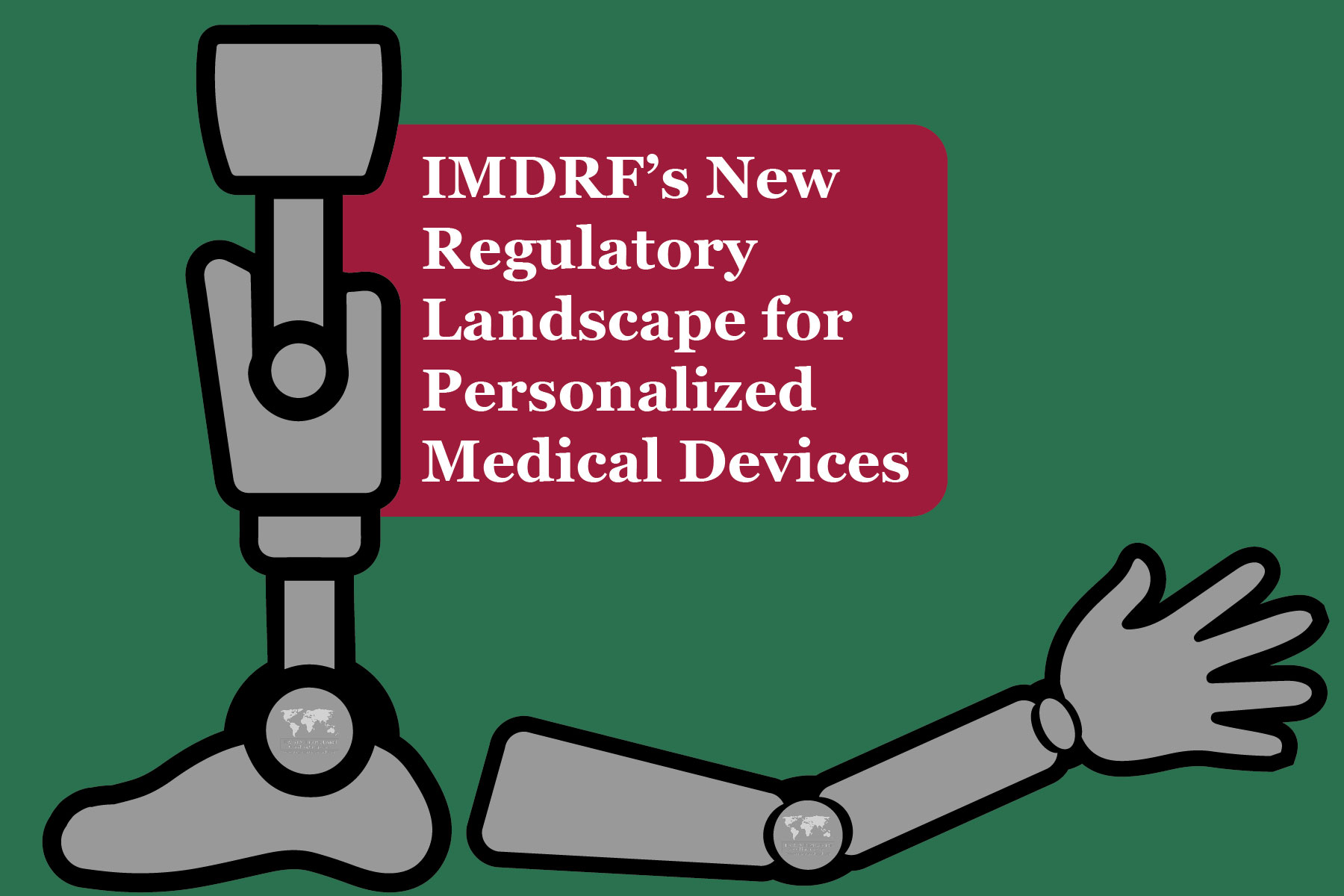The International Medical Device Regulators Forum (IMDRF) has recently issued a final guidance document to outline its expectations around the regulatory landscape for personalized medical devices. This recent guidance document builds on the previous IMDRF document, ‘Definitions for Personalized Medical Devices’.1
According to the guidance document, custom made medical devices that are intended to treat/diagnose special cases where commercially available products/therapies are inadequate for meeting the needs of particular individuals must comply with the following requirements:2
- Determine the classification of the device assuming it is not a custom-made product and consider applying the equivalent regulatory requirements of the jurisdiction it is sold in.
- Conduct Risk analysis
- Appropriate physical testing
- Manufacturing and record-keeping under a Quality Management System
- For high-risk custom-made devices, IMDRF recommends a third-party oversight such as that of an auditing organization for their QMS
- Registration and notification as per applicable jurisdictional regulatory authorities
- Follow a post-market surveillance, corrective, and adverse event reporting program
For patient-matched medical devices where the devices are designed and produced for an individual within validated parameters of a specified design, the manufacturer must demonstrate safety by identifying the maximum performance limits and limiting configurations related to manufacturing variables.21
In addition to all of this, manufacturers of personalized medical devices must keep records of the documented requests and specific design characteristics from the health care professionals. For implantable medical devices, IMDRF recommends a period of at least 15 years for housing such records and for all other devices at least 5 years.2
Need help building a QMS? Call us today at 248-987-4497 or email us at info@emmainternational.com.
1BSI (July 2020) New guidance on regulatory pathways for personalized medical devices retrieved on 07/13/2020 from https://compliancenavigator.bsigroup.com/en/medicaldeviceblog/new-guidance-on-regulatory-pathways-for-personalized-medical-devices/?utm_source=pardot&utm_medium=email&utm_campaign=SM-SUB-LG-CN-meddev_blog-2001-2012
2IMDRF (March 2020) Personalized Medical Devices- Regulatory Pathways retrieved on 07/13/2020 from http://www.imdrf.org/docs/imdrf/final/technical/imdrf-tech-200318-pmd-rp-n58.pdf






